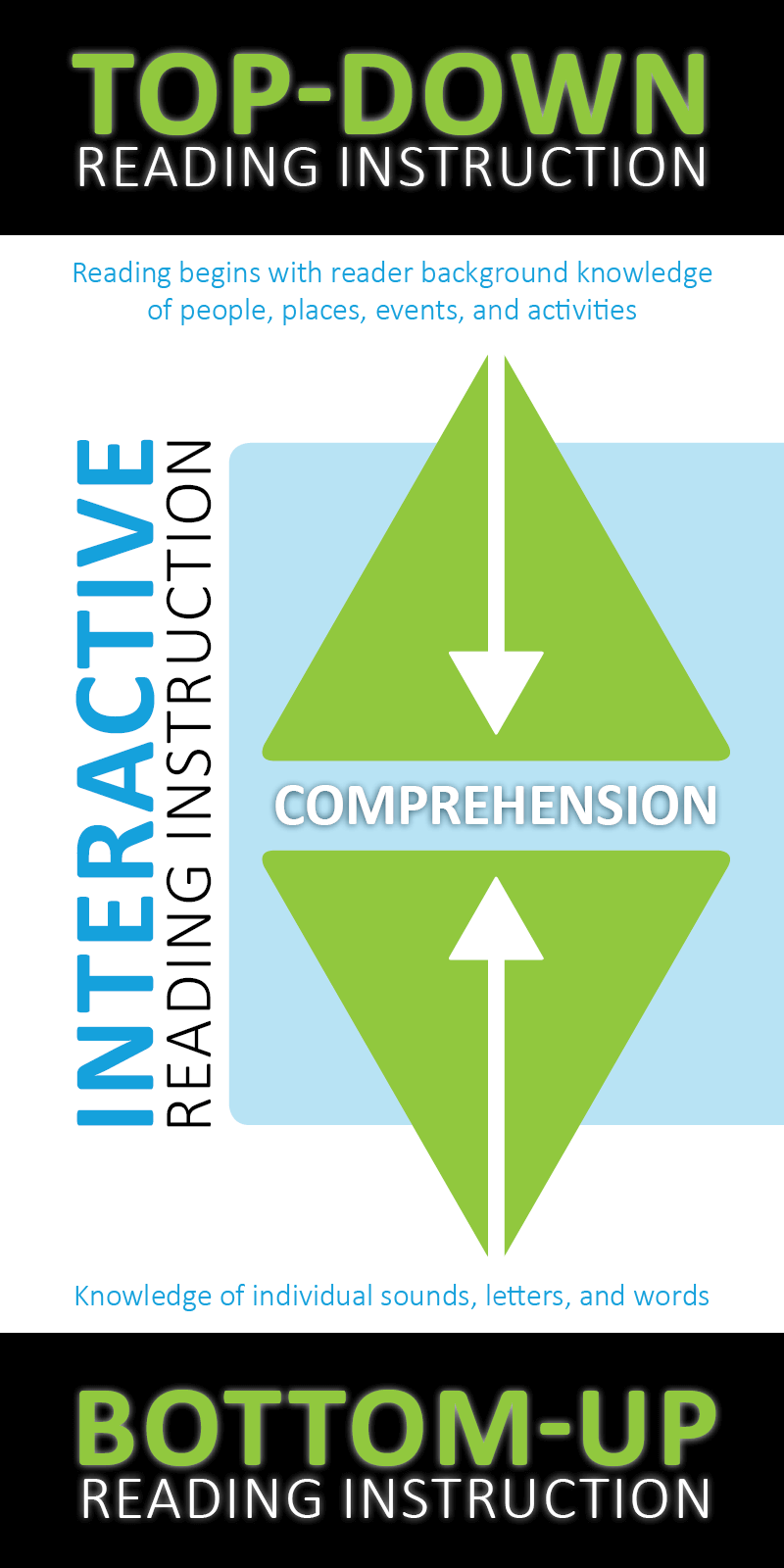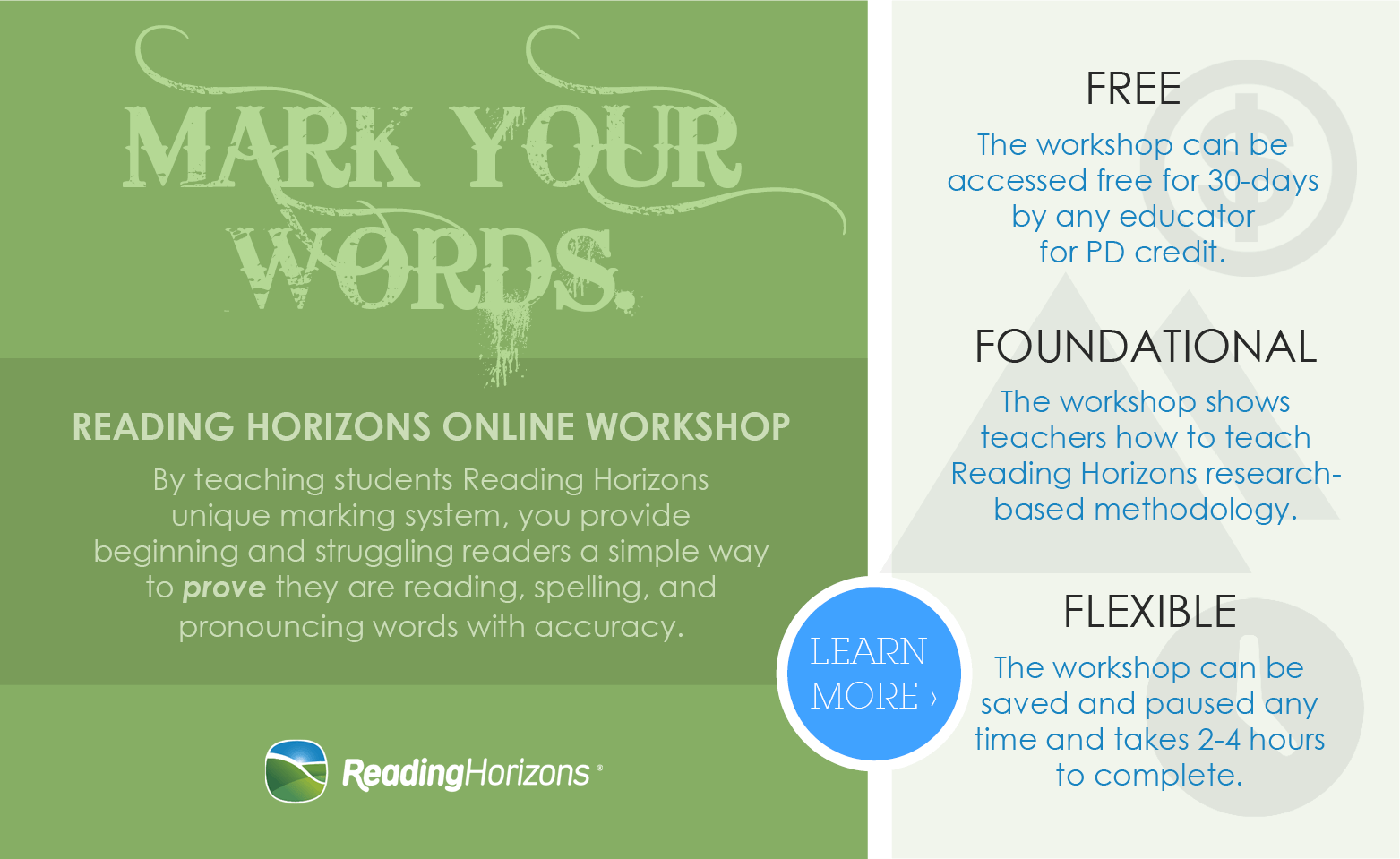Reading Horizons in Practical English-Language Teaching
Former TESOL President Dr. Neil J. Anderson and David Nunan have teamed up together to write a book about practical ways to teach the English language. The following is an excerpt from their book talking about how Reading Horizons can be an effective bottom-up resource.
***In addition to ELL reading instruction highlighted in this article (below), Reading Horizons® also provides complete reading curriculum including explicit phonics instruction for elementary schools, and reading intervention for struggling students.***
Practical English Language Teaching
 The approach (to teaching reading) that is accepted as the most comprehensive description of the reading process is an interactive approach. This … combines elements of both bottom-up (fundamental basics of letter and sound recognition) and top-down (comprehension is achieved by using background knowledge and making predictions) approaches. The best readers in any language are those who combine elements of both. For example, most readers begin reading by using top-down reading strategies until there is a problem, and then they shift to bottom-up strategies. Have you ever read something quickly and suddenly come to several new words? You are required to slow down your reading to decode the new words. When you do this, you are using bottom-up strategies to understand the words (p. 7)
The approach (to teaching reading) that is accepted as the most comprehensive description of the reading process is an interactive approach. This … combines elements of both bottom-up (fundamental basics of letter and sound recognition) and top-down (comprehension is achieved by using background knowledge and making predictions) approaches. The best readers in any language are those who combine elements of both. For example, most readers begin reading by using top-down reading strategies until there is a problem, and then they shift to bottom-up strategies. Have you ever read something quickly and suddenly come to several new words? You are required to slow down your reading to decode the new words. When you do this, you are using bottom-up strategies to understand the words (p. 7)
The best readers in any language are those who use interactive reading, which integrates elements of both bottom-up and top-down reading. In the development of a reading syllabus, it is important to consider the balance that you will give to these processes.
Beginning-level readers should be exposed to a strong bottom-up component. This is perhaps the greatest weakness in the development of many reading syllabi. Little or no attention is given to the explicit instruction of bottom-up reading. A guideline that you could follow in preparing a syllabus for beginning level readers is allocating 50 percent of your syllabus to teaching bottom-up skills, 30 percent to top-down skills, and 20 percent to interactive skills. With a strong foundation in bottom-up skills, beginning-level readers will become more-proficient readers more quickly.
Systematic phonics instruction is a bottom-up approach to reading that should be integrated into reading materials for beginning proficiency-level readers. However, the reality is that most textbooks do not deal with phonics instruction.
There are also effective phonics programs that provide teacher instruction as well as online learning support. Since much of the learning necessary for successful phonics skills is individual, the computer-based learning environment is a particularly good resource for English-language teachers. One such program is Reading Horizons. Reading Horizons consists of 30 lessons. The lessons divide the 42 Sounds of English into four consonant sounds and one vowel sound per lesson and systematically introduce the letters by name and sound. Students then learn how to blend the consonant and vowel sounds. They are then taught Digraphs and diphthongs, followed by Special Vowel Sounds.
Reading Horizons teaches beginning readers Five Phonetic Skills for effectively decoding sounds in English. The Five Phonetic Skills are:
- When one guardian consonant — and nothing more — follows the vowel, the vowel will be short.
- When the vowel is followed by two guardian consonants and nothing more, the vowel will be short.
- When a vowel stands alone, it will be long.
- Silent E makes the first vowel long.
- When vowels are adjacent, the second vowel is silent, and the first vowel is long.
In addition, Reading Horizons teaches Two Decoding Skills:
- If there is only one guardian consonant following the vowel, that consonant will move on to the next syllable.
- When a vowel is followed by two guardian consonants, the consonants will split. The first consonant will stay in the first syllable, and the second consonant will move on the next syllable.
The program can be accomplished in the classroom with a trained teacher who understands the teaching methodology used by Reading Horizons. In addition to explicit classroom instruction, the lessons can be delivered via computer. The computer program guides the students through the lessons and provides auditory as well as visual input for learning the phonics rules.
Anderson, N. J. (2008)
Practical English Language Teaching: Reading (pp.7, 28-29)
New York: McGraw-Hill
Additional Insights from Dr. Neil J. Anderson:
Components of an Effective ESL Curriculum—Insights from Former TESOL President [Article]
Holding in the Bottom While Sustaining the Top: A Balanced Approach for L2 Reading Instruction [Webinar]
